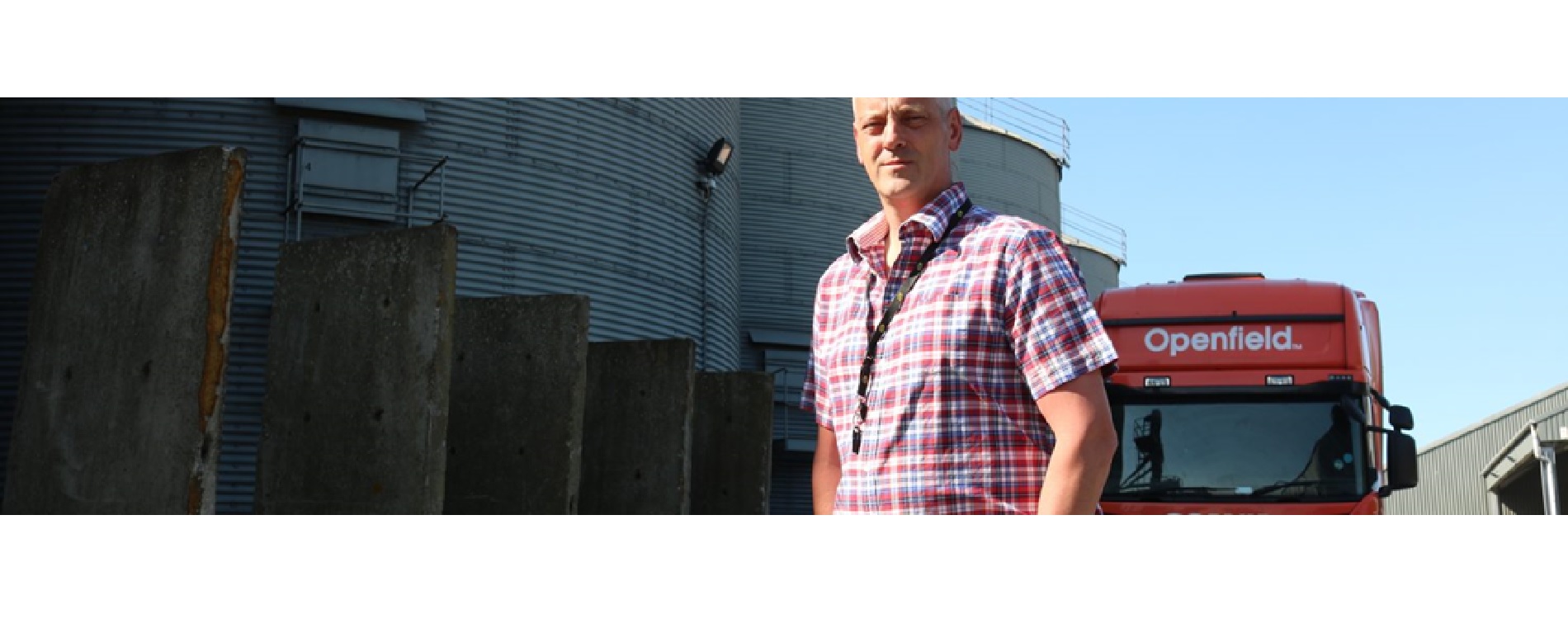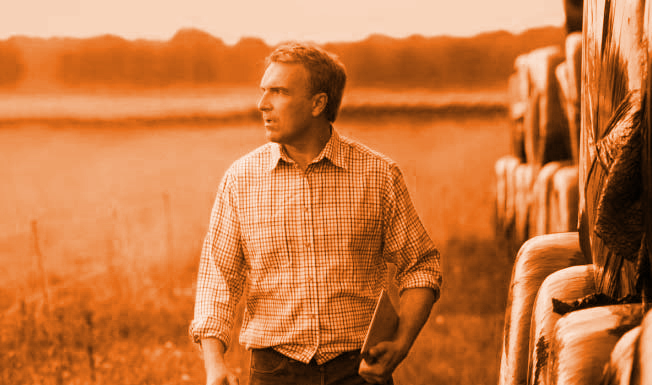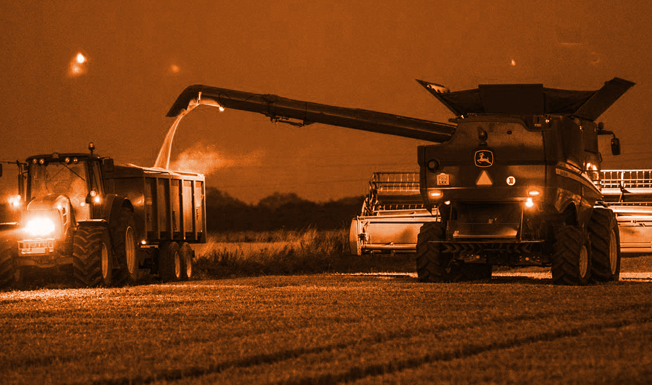Better buying, better selling – The seed selector
Making the right seed choices this autumn are key considerations for every UK grower, so how does the UK’s largest farmer-owned co-operative make the right ones? CPM tours Openfield’s seed plant and asks the man with the answers.
You wouldn’t describe a person by numbers, and it’s the wrong way to judge every aspect of a variety, too.
By Tom Allen-Stevens Editor of CPM Magazine
Harvest 2019 may be one of only 20 harvests in your lifetime over which you have a real, independent influence. Lee Bennett at Openfield wants to ensure you make the most of that opportunity.
“Seed selection is right at the front of what growers do. Get that wrong and no amount of chemistry or management will bring back the lost potential. But make the right choice and you could have made the first decision on your way to the best crop of your lifetime,” he says.
It’s that knowledge that drives Lee, who heads up the Openfield seed-processing team that puts up to 500t/day of quality seed into the market. “There are three things we could offer the grower: the highest quality seed, the best service and the lowest price. Which two of those would you like?”
Unsurprisingly, it’s the first two on which he focuses his efforts on behalf of around 6000 growers in total with whom Openfield does business. As the largest farmer-owned co-operative, referred to as a partnership, it sees itself as having a unique outlook on the industry, and a responsibility to its 4000 farmer members that goes beyond maximising shareholder value.
To Lee, that translates into two fundamental aspects the seed side of the business has to deliver: the right advice, in terms of insight into the varieties on offer, and the right service, in terms of quality of product and timeliness of delivery.
So what does that mean when choosing a variety, and how can you be sure you’re making the right decision? “The scores you find in the AHDB Recommended List are a good start, but you have to look beyond the numbers,” he says.
“You wouldn’t describe a person by numbers, and it’s the wrong way to judge every aspect of a variety, too. What I look to do is understand its personality and the way it behaves. And I’m not just going to take someone’s word for it – I want to see it for myself. I need to have the confidence that the decisions I make on which varieties should be multiplied up are well founded so I can be sure I’m passing the right advice on to growers.”
This is distilled and disseminated throughout the Openfield business. Emphasis is placed on making sure the advice is not only qualified, but consistent and can be accessed easily by growers, either through a farm business manager or through Openfield’s Seed Selector.
Insight into a variety starts with its parentage, notes Lee. “The cross a variety is bred from gives you a really good indication of how it may ultimately perform. A variety with a parent susceptible to yellow rust, for example, will always be vulnerable to break down if there’s nothing in the other parent to counter it. So it should be treated with caution, regardless of its disease score.”
Lee’s next pivotal port of call is the variety’s breeder. “I try to take every opportunity to visit the breeder and go round the plots with the person who’s actually responsible for making the cross. They have a different view on the varieties from the commercial guys – these crosses are their children, and they’ll give you an honest view of how they behave.”
His third core source of information is what he sees – Lee makes a point of visiting variety plots at different times of the year to assess growth habits and relative differences. “This is crucial for oilseed rape – I look at how they perform pre-Christmas, then just before flowering, and then again once they’re all podded up. The frustrating thing about OSR is that all varieties are lumped together, but the differences between them are massive, and the RL can’t really describe that.”
He has one stand-out example to illustrate this. “I remember the day I first saw this variety, about five years before it was due to become a mainstream, commercial line. The weather was horrendous, but I’d arranged to walk round the Dekalb plots with the breeder, Matthew Clarke. We stopped at this one variety – CWH 140 was its code name – and all I could see was extra vigour. I’d never seen growth in a variety like that before, so we managed to secure 50 bags the following year to see how it performed.”
It was a similar reaction from farmers who tried it, and the variety, that was subsequently named DK Extrovert, went on to take a greater share of the UK rapeseed market than most of the varieties that were on the RL, despite never actually appearing on the list itself.
But Lee cautions against making knee-jerk reactions. “All too often, decisions are made on the basis of how a variety’s performed over the past one or two seasons. The 2015 harvest saw some low specific weights, for example, and following the 2016 harvest, many growers were very wary about some crops that lodged.
“You can’t unknow what you’ve just experienced, and it’s always important to have this knowledge in mind. But going forward, it’s also important to farm for the average of seasons, and not to allow a view of a variety to be distorted by a single factor.”
He cites the Group 1 milling wheat market as an example. “Skyfall has taken off on the back of several good years. But last year saw a number of crops delayed due to variable weather at harvest, and it was the varieties that hang on to their Hagberg that picked up the premium markets. Because of Skyfall’s dominance, KWS Trinity, with a more consistent Hagberg, never really got established, and only now is gaining in popularity because of this phenomenon in harvest 2017.”
This season’s long, wet winter and short spring are bound to affect how varieties will perform, he notes. “I worry about wheats in heavy land that won’t really have established very good root systems. Also anything weak-strawed will be prone to lodging. Coupled with that, a lot of crops didn’t get a T0 fungicide, so we could get an exaggerated view of how varieties fare.
“OSR crops came into flower very late, and some varieties started to finish flowering early. I worry that growers will run a mile from any variety that’s appearing not to behave normally as a result of this strange season.”
Lee’s advice to growers when making seed selections this summer is to list their priorities, and then critically evaluate that list and the order in which those priorities should come.
“Those growers who get the most value out of our service come to us with a clear idea of their needs – they’re the ones that appreciate the integrity of what we have to offer. To me, that’s honesty around advice, quality of the product and timeliness of delivery,” says Lee.
Quality counts in a fast-throughput line
It’s like a scene out of a science-fiction movie as the lights flick on and the dormant seed-processing plant takes shape in the gloom of the shed. “We treat the plant a bit like a farmer might treat a combine harvester – it does very little for nine months of the year, then we push it hard for maximum throughput for just a few weeks,” explains Lee Bennett.
That means there’s emphasis placed on reliability of components within the system, and there can be no bottlenecks that could hold up throughput and potentially leave a grower waiting for their seed. “It’s all about service,” he adds.
So there’s a new robot, Elmo, who’s replaced the manual bagging line for rapeseed. This means the previous maximum throughput of 14t in a 12hr shift from a five-strong team has stepped up to 35t in 8hrs with just one operator.
A similar investment was made last year with the colour sorter. This is a £250,000 ingenious piece of tech that looks carefully at every grain as it passes over a cascade. Any seeds of dubious colour or shape are popped out of the flow and taken down a different chute.
“You can set it to any shape you want and any colour. It’ll really hit the sample hard and polishes it up,” remarks Lee. “The technology’s been around for a while, but we waited to make the investment until they’d developed a model that has the accuracy and speed of throughput we needed. This particular one stood out by a mile as a really smart piece of kit and manages up to 30t/hr.”
Despite a high throughput, there’s full traceability through the system, and the two seed-treatment units can apply any combination of available seed dressings to a customer’s specific requirement. “Every hour we’re also taking samples to ensure continuous quality control – that gives us a qualified sense check we’re delivering the standards a grower would want.”
What’s more, throughput’s about to be increased, with plans already drawn up for a plant expansion that’ll raise capacity by around 60%, due to come on stream in 2020. It’s a move Lee relishes. “I’m looking forward to growing the business – standing still isn’t good enough,” he says.
Consider all factors with the Seed Selector
Philip Crowther, Openfield’s commercial manager for seeds, has a somewhat daunting task when providing information on varieties across the business. Not only must he ensure the advice and insight are consistent and bang up to date, this consistency must remain intact once interpreted by Openfield’s team of 40 plus farm business managers (FBMs) and then relayed to growers.
“They’re all individuals and have their own ways in which they deliver the service to customers, and will tailor this to the growers’ individual needs. So I have to be mindful of the myriad ways of relaying the information and adapt it to the individual.”
A prime example is Openfield’s Seed Selector (https://www.insight.openfield.two3.theweborchard.com/seedselector.php), which was launched in 2017 and has since become a key tool, respected both internally and externally for its insight on varieties and ease of use. “It takes the AHDB Recommended List and makes it interactive,” says Phil.
The need for this has come to the fore as the RL has ballooned, he notes. In 2003, there were four winter wheat candidates, from which three were selected. In 2016, this had increased to 19 candidates with 11 of the varieties added to the RL in 2017.
“It can be a daunting and time-consuming task to sort through the 41 varieties of winter wheat,20 varieties of winter barley and an even longer list of OSR varieties. It’s perhaps understandable why many growers chose to stay with a variety they know even though there may now be others more suitable to their situation.”
The Seed Selector allows growers to choose first by seed group, which market they’re aiming for and site suitability. “There are some varieties that have no multiplication, so it only shows lines that are commercially available. What’s more, we include varieties that aren’t on the RL but there is seed in the market.”
A series of sliders allow a grower to fine-tune their requirement – a septoria score above 6, for example, those that come early to harvest, or have a robust lodging score. “You can then pick up to four varieties and compare them side-by-side.”
Uniquely, each variety carries a commentary. This is built not just from Openfield’s relationship with plant breeders and insight the seed team gathers through variety trials. The co-operative trades more than 4M tonnes of grain and oilseeds annually and has long-standing relationships with key grain consumers. So the commentary offers an informed view of the market, too.
“This is where you’ll also find valuable information you simply won’t find elsewhere – for OSR, autumn and spring vigour can make a massive difference to your view of a variety’s suitability.”
Phil ensures the tool is regularly updated as new data becomes available. There’s also the ability to build in new information as it becomes available during the growing season. “A classic example is yellow rust – the scores are set once a year but we can highlight a breakdown in a particular variety as soon as it’s acknowledged.”
The tool is available to all growers registered on Openfield’s Insight online portal.
Better buying, better selling
To remain at the forefront of arable farming and to maximise the value from every hectare of crop grown requires a keen understanding of the grain market, the seed to supply it, and the fertiliser to feed the crop. Through this series of articles, CPM is working with Openfield to provide a market insight and help growers focus on these major business decisions to ensure better buying of inputs, and better selling of the produce.
Openfield is the UK’s only national farming grain co-operative, owned by almost 4000 arable farmers. Openfield’s team work with 6000 farmers to supply some of the biggest and best-known names in the British food and drink manufacturing industry.
Openfield also supplies seed and fertiliser, provide grain storage and offers expert advice on grain marketing and risk management to deliver innovative supply chain solutions to their farmers and clients.




